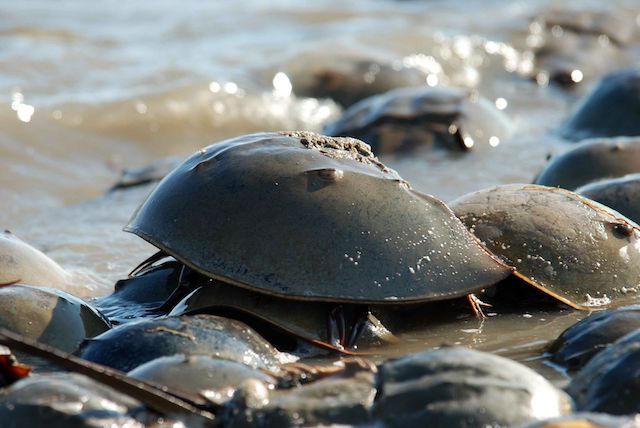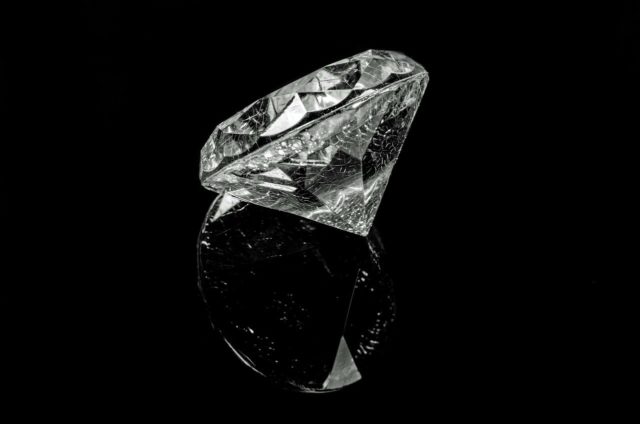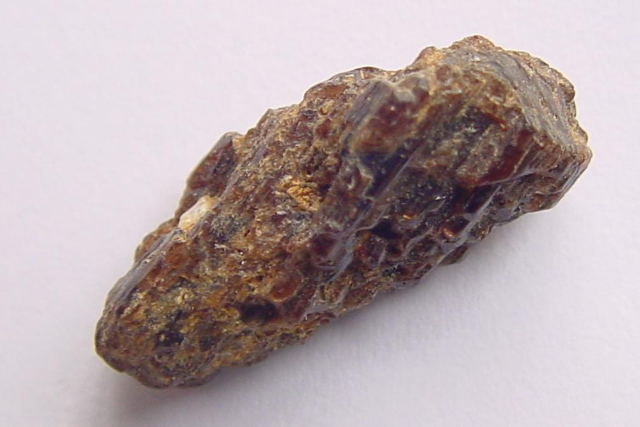The world is full of expensive things. A Koenigsegg CCXR Trevita will cost you about $5 million, for instance, if you’re into very fast cars. But a car is a big machine, and clearly a lot goes into making one. There are other things in the world that, pound for pound, will absolutely shame anything like a car or a private jet in terms of overall cost. When you get down to grams and ounces, some items carry an astronomical price tag.
10. Horseshoe Crab Blood

Looking like prehistoric fossils, horseshoe crabs are generally overlooked by most people. They’re not dangerous and don’t even have claws, since technically they’re not even crabs. In some parts of the world the eggs of the crabs are eaten, but that’s also pretty rare. As far as humans are concerned, the big selling point of a horseshoe crab is its blood.
Bright blue in color, the blood of these animals has some remarkable medical properties that have seen it become a high demand item, especially during the race to produce a coronavirus vaccine, horseshoe crab blood became a desirable commodity with prices reaching $60,000 a gallon.
The reason the blood is so valuable is that it contains a compound called limulus amebocyte lysate, or LAL. This compound allows researchers to know if a vaccine has been contaminated with bacteria. LAL encases bacteria in a gelatinous substance so it won’t spread or infect anything. That means the trial and error of previous vaccine research, where scientists would inject rabbits constantly and hope to see results, was eliminated.
There have been efforts to create LAL artificially because some evidence shows this crab harvesting is not as safe for the crabs as medical science wants people to believe, and their numbers are in decline in the wild.
9. Agarwood
If you’ve ever looked into doing some home renovations and maybe adding some wood accents in the process, you know that all wood is not created equally. Some knot-filled pine planks are a lot cheaper than oak or cherry wood. And if you really want to go all out, you can use agarwood.
Agarwood is not something most people have heard of, and there’s no such thing as an agar tree. It comes from aquilaria trees, of which there are just over a dozen different species you might find in Indonesia, Thailand, Laos, and that part of the world.
The heartwood of an aquilaria needs to become infected with Phialophora parasitica, a fungal mold. This can happen if the tree gets damaged somehow, exposing the center and the otherwise unremarkable wood within Once the fungus takes hold, the tree tries to defend itself by releasing a resin. It’s not unlike the way humans produce white blood cells to fight off infection. This resin, over several years, will saturate the heartwood and turn it into agarwood.
The agarwood has a dark color and is very fragrant, which is why it came to be prized by locals. It was used for incense and various other applications where the scent and color could be appreciated.
Because the agarwood has to be carved out by hand, it’s not a simple process. And that is why the value of agarwood is so astronomical, with some top shelf samples going for over $100,000 a kilogram.
8. Tritium
At $30,000 per gram, with costs projected to get up to $200,000, tritium is one of the most expensive things the average person has never heard of but has still probably seen without knowing it. They make many glowing green products like the dials on watches from tritium.
A radioactive isotope of hydrogen, tritium occurs in nature, but it’s very rare. It has to form in the atmosphere after being exposed to cosmic rays in a way very reminiscent of how the Fantastic Four got their powers. Fortunately for light-up watch aficionados, it can be produced artificially on Earth as well. All you need to do is irradiate some lithium in a nuclear reactor.
Aside from self-illuminating lights, tritium has found a home in various medical devices and even some bombs. It also serves as a nuclear fuel inside tokamak reactors, which are considered the safest kind of nuclear reactors out there.
7. Zolgensma
Anyone who pays out of pocket for medication knows that some drugs can have utterly baffling prices. Even when insurance covers part of the costs, you can still end up getting rakes over the coals. Of all the drugs in all the world, however, none are quite at the cost per dose as Zolgensma.
The upside of Zolgensma, a gene therapy to treat spinal muscular atrophy in children, is that a patient needs only one dose. A little 5.5 milliliter bottle in a box is how the medication comes, and a doctor just measures the dose based on the child’s body-weight, as you’d expect, and the medication is injected. The downside is that a dose costs about $2.1 million.
Staggering medication fees often make the news, but none are actually close to the level of Zolgensma. There was a scandal when Turing Pharmaceuticals raised the price of Daraprim from $20 to $750 a dose. But in fairness to Zolgensma, this is a onetime dose and it could arguably give a child their entire life when, before the treatment existed, their prognosis was abysmal. Most children with the disease did not see their fourth birthday. With proper treatment, some patients have lived long, full lives with their own children and even grandchildren.
6. Saffron

Saffron comes from the stigma of crocus plants and is prized for the vibrant yellow color it can add to dishes when cooking, as well as its unique aroma. They have cultivated it for thousands of years. And even after all this time, it remains the most expensive spice in the world. A kilogram, or just over two pounds, will set you back around $11,000.
The reason for saffron’s immense price tag is in part because of the difficulty in harvesting it. There are fields and fields of flowers all around the world, but particularly in the middle east and Europe, where the plants grow. However, the harvesting period is only a few weeks long. And since you need to harvest 150 flowers to get a single gram, it’s a process that is constantly racing a clock to get results.
To get half a kilogram of dry saffron, you’d need to harvest an entire football field’s worth of plants, about 75,000 of them. All of that just for color and smell, since the flavor of the spice is barely noticeable.
5. Diamonds

Diamonds are still big in the world of precious gems. There are actually a number of stones more expensive than diamonds out there, and we’ll touch one the most expensive one later. But since they’re all relatively the same in terms of how they look and why they’re expensive, it’s worth understanding just what a diamond, which everyone has heard of, is worth so much. And also what they’re worth.
Diamonds are usually sold by the carat, a measurement that is not easy to translate into weight. A pound of bacon costs a few dollars, so what would a pound of diamonds cost? It’s not the easiest thing to figure out.
A diamond carat equals 200 milligrams. A full gram of diamond is equal to five carats then. If you’ve ever bought diamond jewelry, you now have an idea of just how expensive diamonds are by the gram and also why they sell them by the carat, since it makes the price sound more reasonable that way. Also because a five-carat diamond is much harder to come buy than the smaller ones.
Since not all diamonds are equal in terms of color and clarity, more goes into the cost of a diamond than just the weight. That said, a cheap one gram diamond costs about $36,000. A pricey one gram diamond is over ten times as much at $395,000.
4. Deathstalker Scorpion Venom
The very awesomely named Deathstalker Scorpion can be found in parts of Africa and the Middle East. These little guys are typically under three inches long and although their venom is potent enough to make you regret running afoul of one, it shouldn’t be lethal unless you have an allergic reaction.
That venom they produce is a remarkable substance, however, and science wants more of it. It has proven to be valuable to research into treating many illnesses, including brain tumors and diabetes.
The problem with using the venom for research is that it’s very hard to get. At three inches long, you can imagine one of these scorpions is not going to produce a lot. Plus, if it does sting you in the process of harvesting it, you’re going to regret it. A drop of venom the size of a grain of sugar costs about $130. If you wanted a gallon of it, for whatever reason, you’d max out your credit card to the tune of $39 million.
A company in Morocco has actually invented a machine that can milk the scorpions four at a time, and do it much faster than humans can as well. That may drive the price down in the future, but for now this is the most expensive liquid in the world.
3. Painite

Painite is considered one of the rarest, if not the rarest, gemstones in the world. They’re deep red like rubies, and just like diamonds, they are not cheap. They are so rare that by the year 2004 only two of them had ever actually been cut into gemstones for jewelry. Only three crystals were even known to exist until 2001.
Because of the incredible rarity, Painite costs up to $60,000 per carat. Based on what we saw with diamonds earlier, that means a gram of painite may cost around $300,000 or so.
In the last twenty years, more samples of the stones have been found, including many lower quality ones. This has had an effect on the price, but the highest quality stones still fetch a high dollar value.
2. Californium
They created Californium at the University of California Berkeley back in 1950. You can find it on the Periodic Table of Elements at number 98 and it has the second highest atomic mass of any element. It’s produced inside nuclear reactors and in particle accelerators and is actually in fairly high demand.
Californium is a neutron emitter and is useful for starting up new nuclear reactors as a result. It’s also useful in various kinds of radiation therapy, like for brain cancer, as well as for practical scans of any number of materials. Neutrons can penetrate nearly anything, so when you want a super effective alternative to x-rays you can bombard something with California neutron emissions to scan the inside of things like sensitive weapons systems or just rocks if you’re looking for things like gold or groundwater.
For all the practical applications of Californium, it brings with it a price tag to match. A gram of Californium currently goes for around $27 million.
1. Antimatter
Anyone who watches Star Trek knows you need to be careful with antimatter, but that it’s also probably pretty handy to have around if you need to keep your warp drive working. In the real world, we don’t have warp drives yet, but we do have antimatter.
Antimatter, just like the name implies, is essentially the opposite of normal matter. On a subatomic level, the particles of antimatter work in the opposite way of those in normal matter, which means they have a reverse charge. Instead of positive protons and negative electrons, antimatter has negative antiprotons and positive positrons.
At the beginning of the universe, both matter and antimatter were created. No one knows why in that VHS vs. Betamax-type battle matter won out and antimatter didn’t, but it seems to be the case. There is still antimatter around, just much less of it.
When antimatter meets its matter counterpart, the two destroy each other and create energy. This contributes to the difficulty in making it because you can’t store it in anything physical since antimatter will destroy whatever you put it in. But we can still create antimatter in limited quantities and hold it magnetically. It’s just not easy, and it costs more than anything in the history of ever to do so. That’s not hyperbole. Antimatter is far and away the most expensive thing mankind has ever made.
Antimatter production, which can only ever be 50% effective since it will create half matter at the same time, brings with it a price tag of $62.5 trillion per gram of antihydrogen. That’s more than all the physical money currently in circulation in the world, which taps out around $37 trillion.